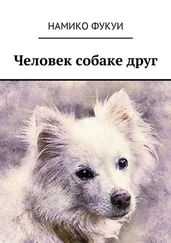G. Berns, How Dogs Love Us: A Neuroscientist and His Adopted Dog Decode the Canine Brain (New York: New Harvest, 2013).
T. Nagel, “What Is It Like to Be a Bat?” Philosophical Review 83 (1974): 435–450.
О дихотомии внешних и внутренних ощущений философы задумывались задолго до Нагеля. См. L. Wittgenstein, Philosophical Investigations, translated by G. E. M. Anscombe, P. M. S. Hacker, and J. Schulte, 4th ed. (West Sussex, UK: Wiley-Blackwell, 2009) (Витгенштейн, Людвиг. Философские исследования).
P. M. Churchland, “Some Reductive Strategies in Cognitive Neurobiology,” Mind 95 (1986): 279–309; P. Godfrey-Smith, “On Being an Octopus,” Boston Review, May/June 2013, 46–60.
Проницательный читатель заметит, что мозг представляет собой нелинейную систему и, вполне возможно, нечто большее, чем просто сумму своих частей. Мне кажется, области сходства можно сравнить с ракурсами фотосъемки. Фотография – это двумерное, плоское отображение пространства, но, если один снимок не дает полного представления об объекте, можно произвести съемку с разных точек и получить достаточно объемную, приближенную к действительности картину. Соответственно, вышеупомянутые области тоже могут быть снимками сознания «с разных точек».
J. E. LeDoux, “Coming to Terms with Fear,” Proceedings of the National Academy of Sciences of the United States of America 111 (2014): 2871–2878.
A. M. Owen, M. R. Coleman, M. Boly, M. H. Davis, S. Laureys, and J. D. Pickard, “Detecting Awareness in the Vegetative State,” Science 313 (2006): 1402.
K. N. Kay, T. Naselaris, R. J. Prenger, and J. L. Gallant, “Identifying Natural Images from Human Brain Activity,” Nature 452 (2008): 352–356; S. Nishimoto, A. T. Vu, T. Naselaris, Y. Benjamini, B. Yu, and J. L. Gallant, “Reconstructing Visual Experiences from Brain Activity Evoked by Natural Movies,” Current Biology 21 (2011): 1641–1646; T. Naselaris, C. A. Olman, D. E. Stansbury, K. Ugurbil, and J. L. Gallant, “A Voxel-Wise Encoding Model for Early Visual Areas Decodes Mental Images of Remembered Scenes,” NeuroImage 105 (2015): 215–228.
K. Rubia, S. Overmeyer, E. Taylor, M. Brammer, S. C. R. Williams, A. Simmons, C. Andrew, and E. T. Bullmore, “Functional Frontalisation with Age: Mapping Neurodevelopmental Trajectories with FMRI,” Neuroscience Biobehavioral Reviews 24 (2000): 13–19; A. R. Aron, T. E. Behrens, S. Smith, M. J. Frank, and R. A. Poldrack, “Triangulating a Cognitive Control Network Using Diffusion-Weighted Magnetic Resonance Imaging (MRI) and Functional MRI,” Journal of Neuroscience 27 (2007): 3743–3752; A. Aron, T. W. Robbins, and R. A. Poldrack, “Inhibition and the Right Inferior Frontal Cortex,” Trends in Cognitive Sciences 8 (2004): 170–177.
W. Mischel, Y. Shoda, and M. L. Rodriguez, “Delay of Gratification in Children,” Science 244 (1989): 933–938.
B. J. Casey, L. H. Somerville, I. H. Gotlib, O. Ayduk, N. T. Franklin, M. K. Askren, J. Jonides, et al. “Behavioral and Neural Correlates of Delay of Gratification 40 Years Later,” Proceedings of the National Academy of Sciences of the United States of America 108 (2011): 14998–15003.
Здесь и далее «говорящие» клички животных даются в переводе для передачи описываемых автором особенностей характера и внешности испытуемых, однако, поскольку речь идет о реальных животных, участвовавших в исследовании и фигурирующих в опубликованных автором и его коллегами научных работах, оригинал клички приводится в скобках при первом упоминании. – Прим. пер .
B. Milner, “Effects of Different Brain Lesions on Card Sorting: The Role of the Frontal Lobes,” Archives of Neurology 9 (1963): 90–100; A. M. Owen, A. C. Roberts, J. R. Hodges, B. A. Summers, C. E. Polkey, and T. W. Robbins, “Contrasting Mechanisms of Impaired Attentional Set-Shifting in Patients with Frontal Lobe Damage or Parkinson’s Disease,” Brain 116 (1993): 1159–1175.
A. Diamond and P. S. Goldman-Rakic, “Comparison of Human Infants and Rhesus Monkeys on Piaget’s AB Task: Evidence for Dependence on Dorsolateral Prefrontal Cortex,” Experimental Brain Research 74 (1989): 24–40.
E. L. MacLean, B. Hare, C. L. Nunn, E. Addessi, F. Amici, R. C. Anderson, F. Aureli, et al., “The Evolution of Self-Control,” Proceedings of the National Academy of Sciences of the United States of America 111 (2014): E2140 – E2148.
W. James, The Principles of Psychology (New York: Henry Holt, 1890); I. P. Pavlov, Conditioned Reflexes (Oxford: Oxford University Press, 1927); E. L. Thorndike, Animal Intelligence (New York: Macmillan, 1911); B. F. Skinner, The Behavior of Organisms: An Experimental Analysis (New York: Appleton-Century-Crofts, 1938).
A. Newell and H. A. Simon, Human Problem Solving (New York: Prentice-Hall, 1972).
D. E. Rumelhart, J. L. McClelland, and PDP Research Group, Parallel Distributed Processing: Explorations in the Microstructure of Cognition (Cambridge, MA: MIT Press, 1986); P. S. Churchland and T. J. Sejnowski, The Computational Brain (Cambridge, MA: MIT Press, 1992).
G. Jékeley, F. Keijzer, and P. Godfrey-Smith, “An Option Space for Early Neural Evolution,” Philosophical Transactions of the Royal Society B 370 (2015): 20150181.
F. J. Varela, E. Thompson, and E. Rosch, The Embodied Mind: Cognitive Science and Human Experience (Cambridge, MA: MIT Press, 1991).
L. P. J. Selen, M. N. Shadlen, and D. M. Wolpert, “Deliberation in the Motor System: Reflex Gains Track Evolving Evidence Leading to a Decision,” Journal of Neuroscience 32 (2012): 2276–2286.
A. R. Damasio, Descartes’ Error: Emotion, Reason, and the Human Brain (New York: G. P. Putnam, 1994).
N. Shubin, Your Inner Fish: A Journey into the 3.5-Billion-Year History of the Human Body (New York: Pantheon, 2008).
M. Ruta, J. Botha-Brink, S. A. Mitchell, and M. J. Benton, “The Radiation of Cynodonts and the Ground Plan of Mammalian Morphological Diversity,” Proceedings of the Royal Society of London B 280 (2013): 20131865.
G. von Bonin, “Brain-Weight and Body-Weight of Mammals,” Journal of General Psychology 16 (1937): 379–389; K. S. Lashley, “Persistent Problems in the Evolution of Mind,” Quarterly Review of Biology 24 (1949): 28–42; L. Chittka and J. Niven, “Are Bigger Brains Better?” Current Biology 19 (2009): R995 – R1008.
Читать дальше
Конец ознакомительного отрывка
Купить книгу







![Рона Цоллерн - Старший мальчик и другие рассказы из книги «Obscura reperta [Тёмные открытия]»](/books/442640/rona-collern-starshij-malchik-i-drugie-rasskazy-iz-thumb.webp)




